Last-Minute NYC Holiday Gift Guide 🎁
We’ve created a holiday gift guide with presents for the intrepid New Yorker that should arrive just in time—


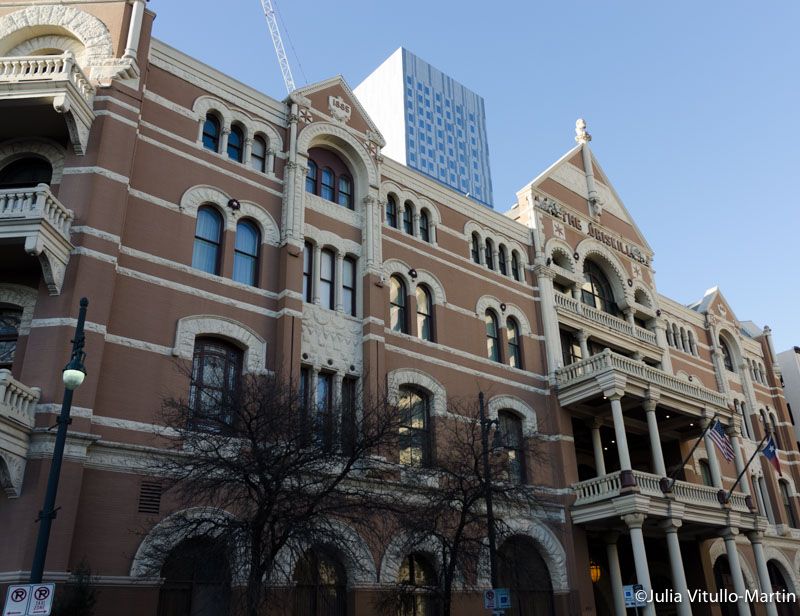
Austin does seem to have it all—good schools, great jobs, a diverse economy including booming tech, and fabulous outdoor living. Using Census Bureau, FBI, and Bureau of Labor Statistics data as well as its own best hospitals and best high schools rankings, US News & World Report created job market, value, quality of life, and desirability indices, plus measures of net migration that ranked Austin at the top of the heap. Austin is young (median age of 33.6), with low unemployment (3.2%) and pretty good housing. Although its housing is priced above the national average it’s far cheaper than most of Austin’s competitors (median home price: $262K).
Austin receives some 22.6 million domestic visitors a year, says its convention bureau, attracted by music, food, and hip events. The upcoming SXSW promises to be sensational, as does October’s Austin City Limits festival. Austin is an amazing mix culturally, recently called by Smithsonian Magazine “the perfect combination of Southern heart, Western spirit, and Yankee intellect.” But it’s also far more than that—its own peculiar phenom marching to its own drummer.
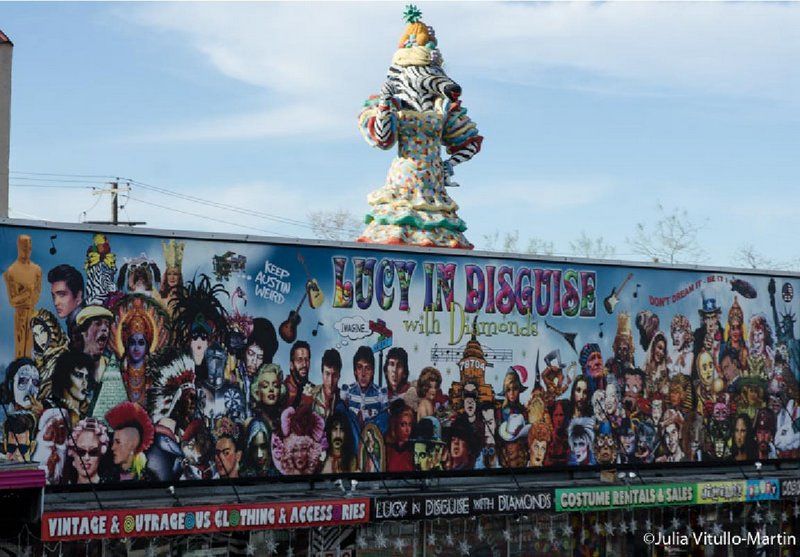
But the slogan is clever and unique and Austin tends to embrace both. Coined by Austin Community College librarian Red Wassenich, it attacks “Austin’s descent into rampant commercialism and overdevelopment,” even while defending unusual, local businesses, however much money they make. In 2002 it became a campaign slogan used by Steve Bercu, owner of the independent bookstore BookPeople, and John Kunz, owner of an independent music store, Waterloo Records. They felt threatened by the proposed arrival of a giant chain, Borders, which was slated to receive city subsidies. In fighting off Borders, they created the Austin Independent Business Alliance (AIBA) to promote local business and to demonstrate their economic contribution. They won. Borders stayed away, and eventually declared bankruptcy. Meanwhile AIBA has some 700 local business members, both the book and music stores are still standing, and Austin is still weird.
Of course another legacy of weird to which Austin can make a serious claim is found in Richard Linklater’s 1991 film, Slacker, which covers a day in the life of Austinite social outcasts and misfits, or, as the New York Times observed, “a collection of eccentrics and lunacies.”
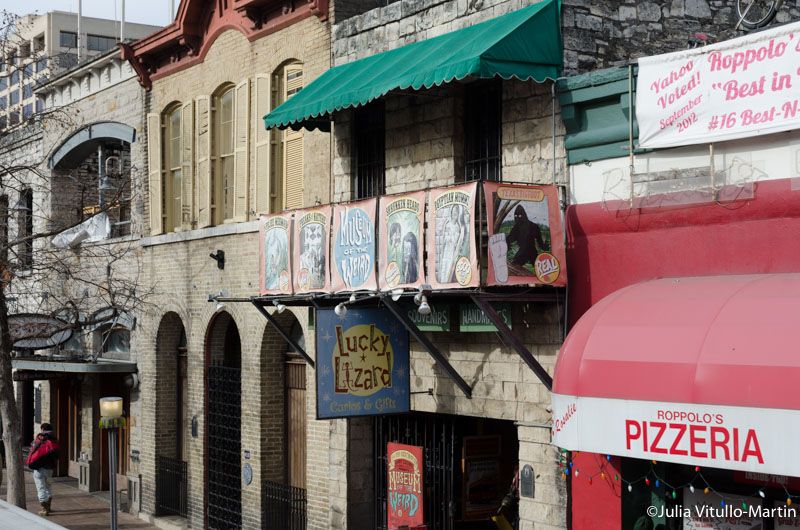
They say Austin has been a hard-partying town since 1865 when General George Armstrong Custer quartered his troops there, bringing prosperity and hijinks to the dive bars on 6
thStreet and, to a lesser extent, 4th Street. Through the decades Austin absorbed and benefited from every musical ethnic wave, including African-American, Mexican, and German. Blues bars, jazz clubs, hard rock, alt rock, country all thrived. But hard partying can take a toll of neighborhoods as well as the partygoers, so downtown Austin has had its ups and downs over the years. One turning point that will appeal to policy wonks was the 1960s move to allow residential in formerly commercial zones which, says the historic plaque, “served as catalyst for introduction of contemporary mixed uses and redevelopment of East 6th Street.”
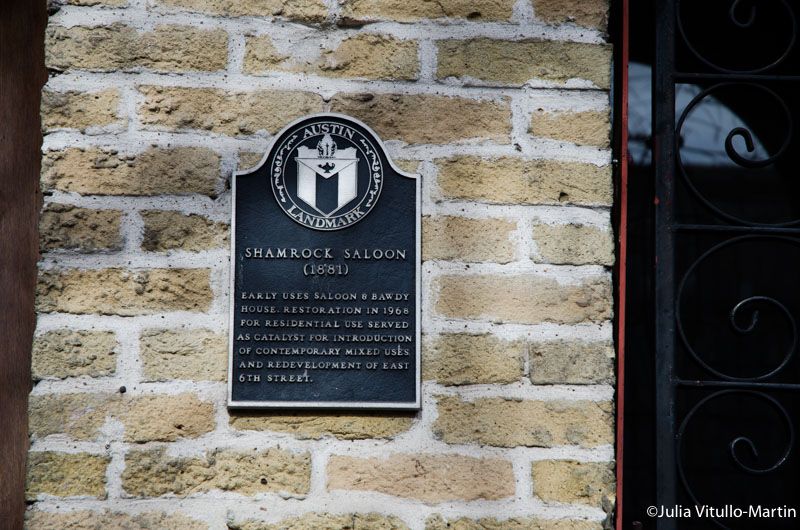
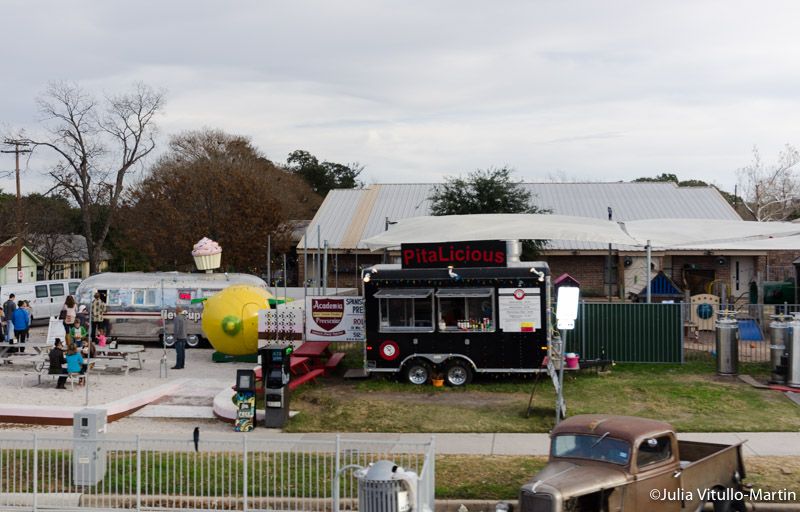
Austin is chockablock with adorable parking-lot diners serving good food—some with definite attitude, such as the food truck asking: “Hey! You gonna eat or what?” One menu site called it the rudest food truck in Austin, but because it serves a renowned Monte Cristo sandwich, all tends to be forgiven.
An efficient way for a visitor to try different diners is to take the Double-Decker Hop-On Hop-Off tour, which makes excellent food stops, including in SoCo, the hip area south of Austin (and, if you’re sneering at the hokey bus idea, just remember: in Austin, everybody is cool, including the cute Double Decker guides). At the corner of South Congress and Elizabeth three fine diners reside: PitaLicious for falafel, hummus, and gyro; Austin City Lemons for fresh lemonade, plus slushies with strawberry and pineapple juice, jalapeño added or not as you prefer; and Hey Cupcake for dessert.
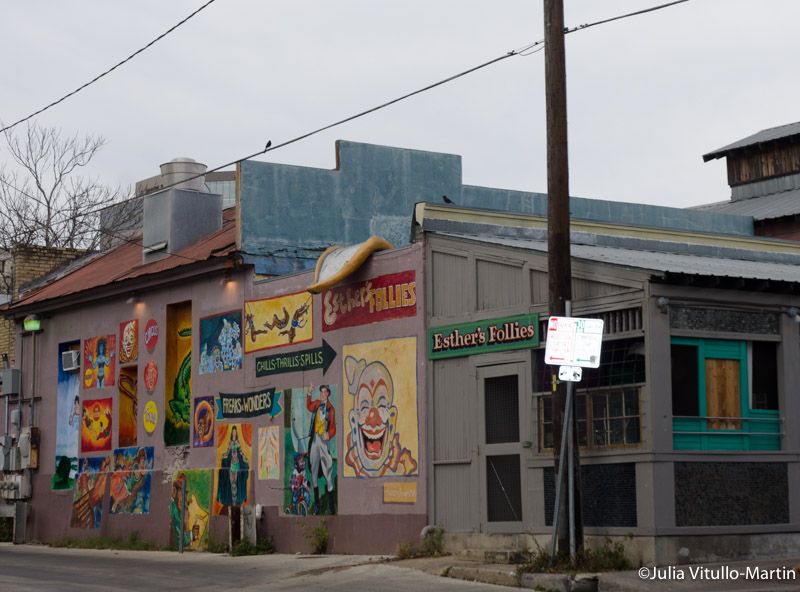
Or so says local columnist Natalie Grigson, who is herself pretty funny. She recommends both Cap City Comedy Club and Esther’s Follies, the latter named after Esther Williams, swimming star of 1946’s Ziegfield Follies—so retro that only a handful of people now alive can tell you what it was. Standup fans can go next door to the Velveeta Room, Esther’s sister club.
Grigson also claims that Austin has the most improv per capita in the nation.
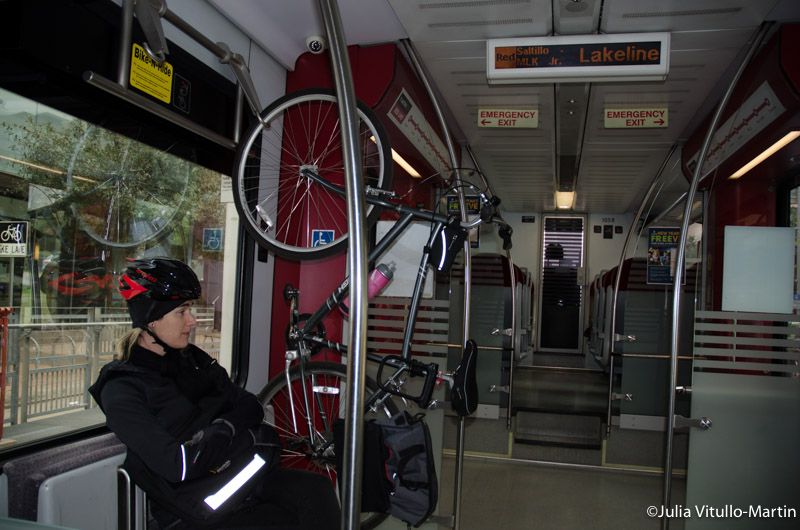
Named one of America’s fittest cities by Shape Magazine, which also singled out its 220 city parks for praise, Austin’s “young, highly active community” bikes, runs, and walks to work. While you don’t actually see all that many bikers in Austin—it’s a far cry from Amsterdam—both the city government and local activists hope to change that.
Austin’s public transportation does its part for biking. Capital Metro, which operates 50 bus routes, has equipped its large buses with strong exterior racks holding 2 to 3 bikes. MetroRail trains have bus racks in addition to generous bike parking lots.
Austin has a modestly priced bike share, Austin B-Cycle; a group, Bike Austin Rides, that organizes cool bike races and rides (like the Devil’s Backbone) around town; a “friendly neighborhood low-key recreational cycling group,” Austin Cycling Meetup; and Social Cycling Austin, which brags of “Putting Butts on Bikes Since 2009.” There’s a 4.6 mile work-in-progress Lance Armstrong Crosstown Greenway, named for Austin’s most famous biker, that seeks to connect bike trails with downtown Austin. The hope is that it will provide a safe and easy east-west route for commuters as well as recreational riders.
That said, Austin really needs better public transpo. Cut in two by Interstate 35, Austin’s sprawling neighborhoods are tough to negotiate without a car. Even downtown is difficult, with the central bus station a long hike from the train. Lovable ideas like the ‘Dillo, a free trolley car resembling an armadillo, or the proposed gondola, in the end didn’t work. Only 2% of Austin’s commuters use public transportation. The American Community Survey of urban per capital transit trips ranked Austin 58th in the country, below Tucson AZ.
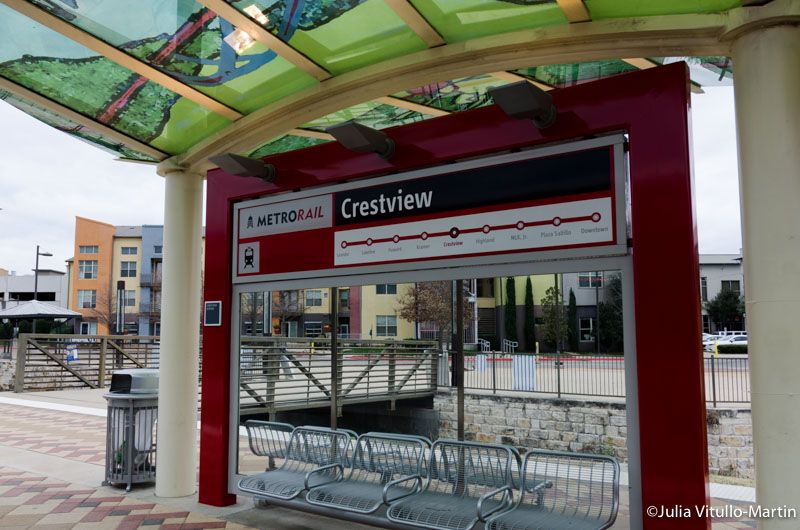
Very much a product of post-Word War II American planning principles that prioritized the car, Austin is trying to reorient living and commuting patterns through its 2005 Transit Oriented Development (TOD) ordinance. It starts with an asset not all cities have: an abundance of rail lines running through Central Texas that advocates think could be made available for passenger rail service since the rights-of-way are already in place. But, of course, freight and passenger rail have had fraught relationships wherever they meet, and Union Pacific last year ominously pulled out of negotiations for use of its track alongside Interstate 35.
In a way, the very existence of a TOD ordinance in Austin is miraculous. Light-rail opponents had successfully fought a 2000 public transportation referendum with the slogan: “Rail: Costs Too Much, Does Too Little.” And even though everyone understands that if TOD is to work you need to get lots of people living and working near train stations (mass transit’s mass needs to be close to its transit), Austin activists resist real density. Crestview development, built on land reclaimed from the Huntsman Chemical Research Facility, is distinctly low rise, with about 500 single-family homes, 600 apartments, and 150,000 square feet of retail & office space. Now, says the New York Times, Austin’s most ambitious TOD development, Plaza Satillo, is also the most contentious. A local developer, the Endeavor Real Estate Group, has teamed with Capital Metro to convert an 11-acre rail yard to a TOD of 800 apartments, 120K square feet of office space, and 110K square feet of retail and restaurants. Endeavor will pay about $200 million for a 99-year lease. The current fight is over size: will Endeavor be allowed to build a 125-foot office building, more than double the neighborhood’s current prescribed height?
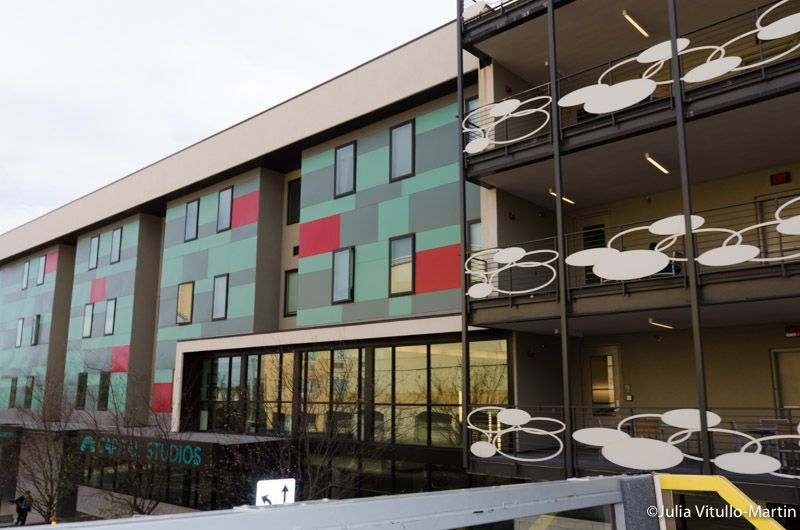
Capital Studios is downtown Austin’s first affordable housing development in 45 years. Built by Foundation Communities and designed by Dick Clark Associates and Forge Craft Architecture, Capital Studios offers 135 rental efficiency units to single adults earning less than $26,400 annually. No parking is provided. The hope is that the downtown location will enable residents to walk to work.
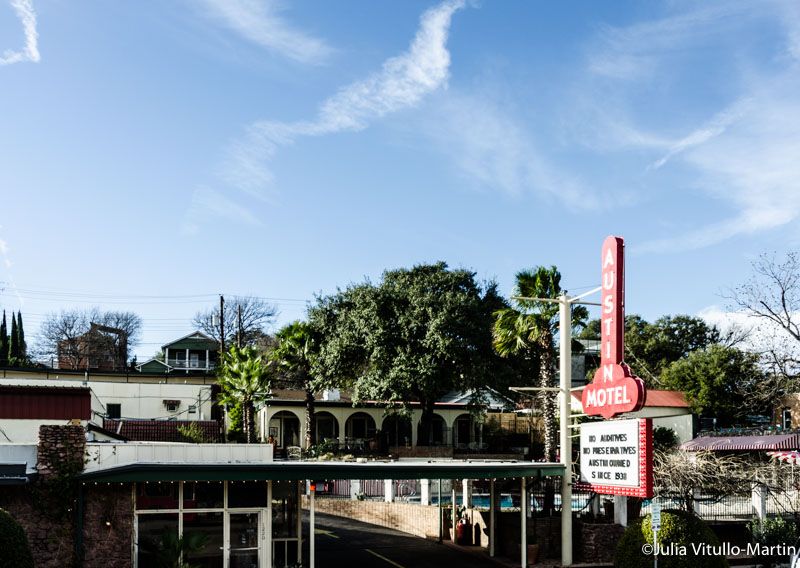
Dating from the 1930s, the Austin Motel on South Congress is being “refreshed” by Liz Lambert, the hotelier the Houston Chronicle calls “Austin’s Reigning Queen of Cool.” (Lambert also owns the chic Hotel Saint Cecilia, named for the patron saint of music and poetry.) In all sorts of diverse neighborhoods, mid-century Americana thrives. Mid-century houses sell well, 50s vintage stores abound, and Austin even builds mid-century new. Leander’s Starlight Village, for example, is a “brand new, mid-century modern styled neighborhood” with eight distinct architect-designed retro style home models to choose from. The owners of Guero’s Taco Bar are planning a modernist 34-room hotel behind their restaurant.
Or you can just stay at the classic Driskill, built by a cattle baron in 1886, and site of many momentous Texan events, including the first date of Lyndon Baines Johnson and the then-Claudia (Lady Bird) Taylor. LBJ proposed at the end of the date. They were married ten weeks later. The Driskill has a famous bar, which hosts a spectacular happy hour.

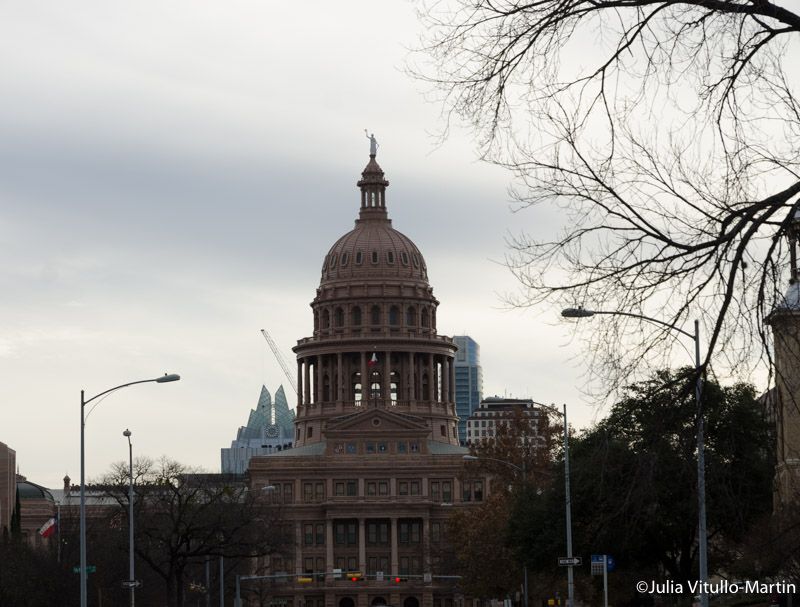
Or, to quote the National Geographic, Austin is “a blueberry in at the tomato soup of red-state politics.” Texas is big, and even in the 1880s when it was building its capitol, it wanted to make a statement that would command national attention. At 302.64 feet, the Texas Capitol is taller than the US Capitol in Washington D.C. But, alas, five other states proceeded to build taller than Texas. Beautiful as it is, the Italian Renaissance building has had more than its share of catastrophes, including fires, floods, and pollution. When the enormous, battered, galvanized iron and zinc Goddess of Liberty statue was removed for cleaning in 1983, she proved too heavy to be hoisted back up. She now lives at the Bullock Texas State History Museum. A replica has taken her place.
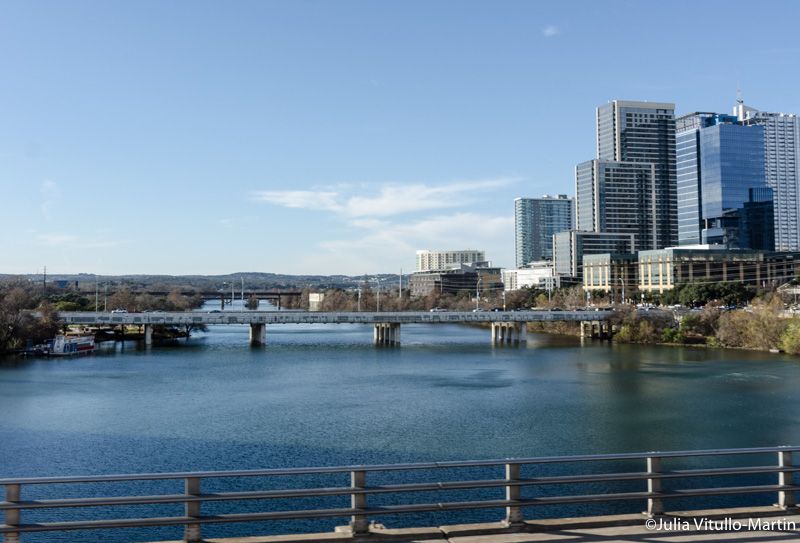
Serene and lovely, Town Lake (officially: Lady Bird Lake) is a relatively recent addition, having been created as a flood-control project by the construction of Longhorn Dam in 1960. It fairly quickly became polluted and ugly, but was reclaimed and transformed into a popular recreation area for kayaks, canoes, and shells by the Town Lake Beautification Committee, established in 1970 by the city and the former first lady. Heavily used bike and bike paths surround the lake. Some 1.5 million Mexican free-tailed bats summer under the Congress Avenue bridge (they winter in Mexico). Their evening search for food, surging into the sky in great numbers at dusk, is an urban wonder all its own.
Next, check out 5 off-the-beaten path bars in Austin and discover the “Cathedral of Junk” in Austin. Julia Vitullo-Martin is a senior fellow at the Regional Plan Association. She can be reached @JuliaManhattan.
Subscribe to our newsletter